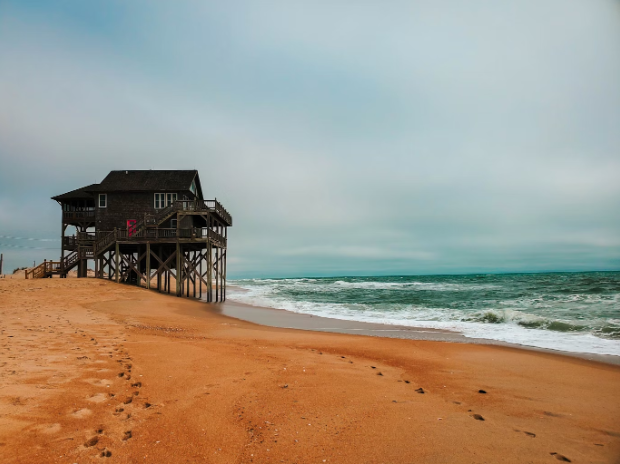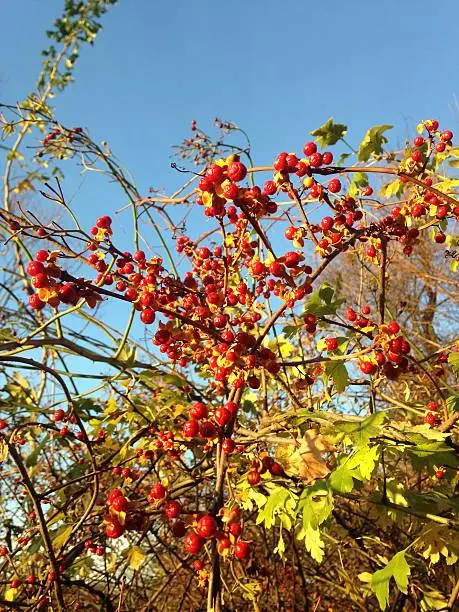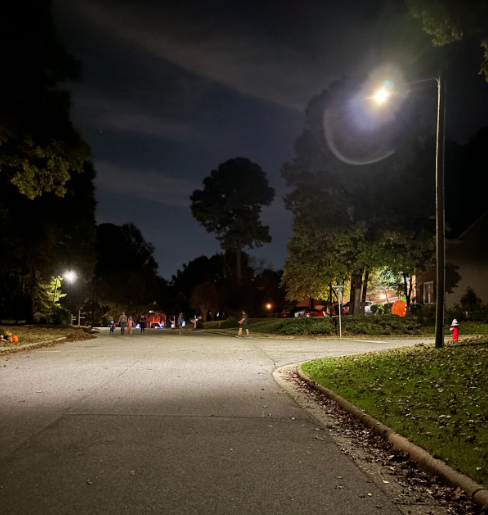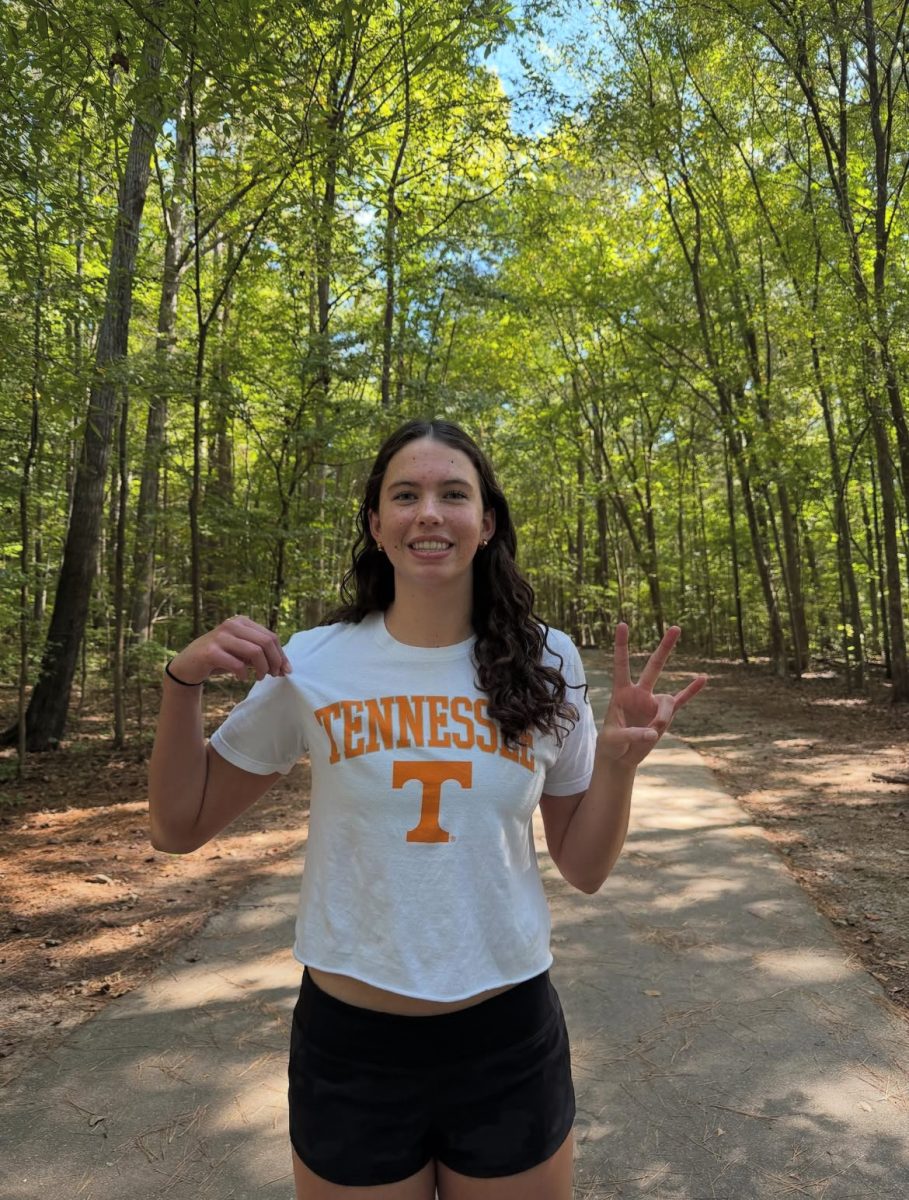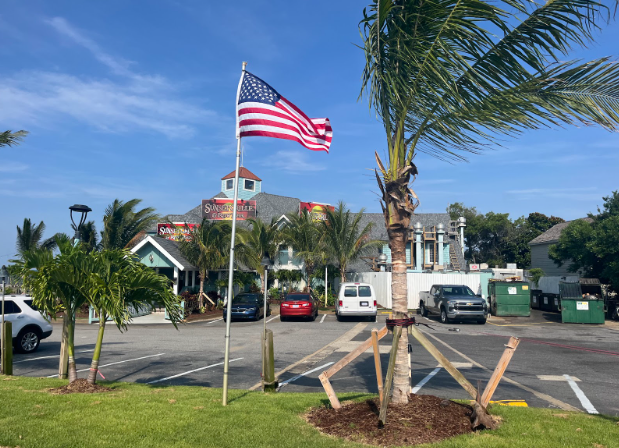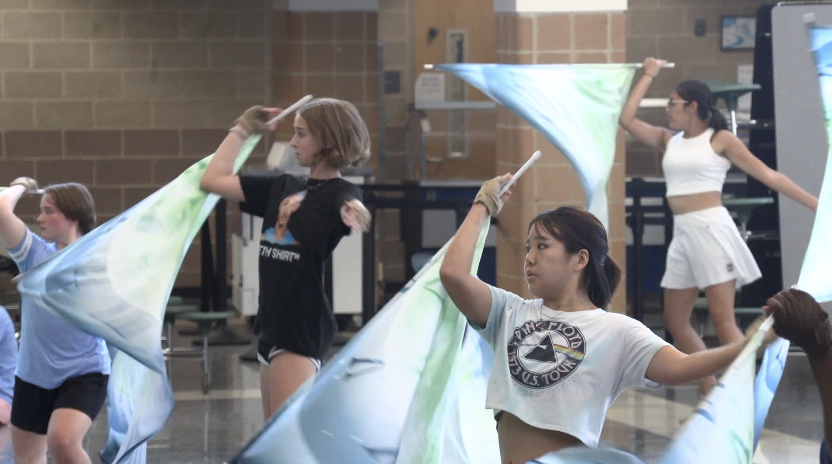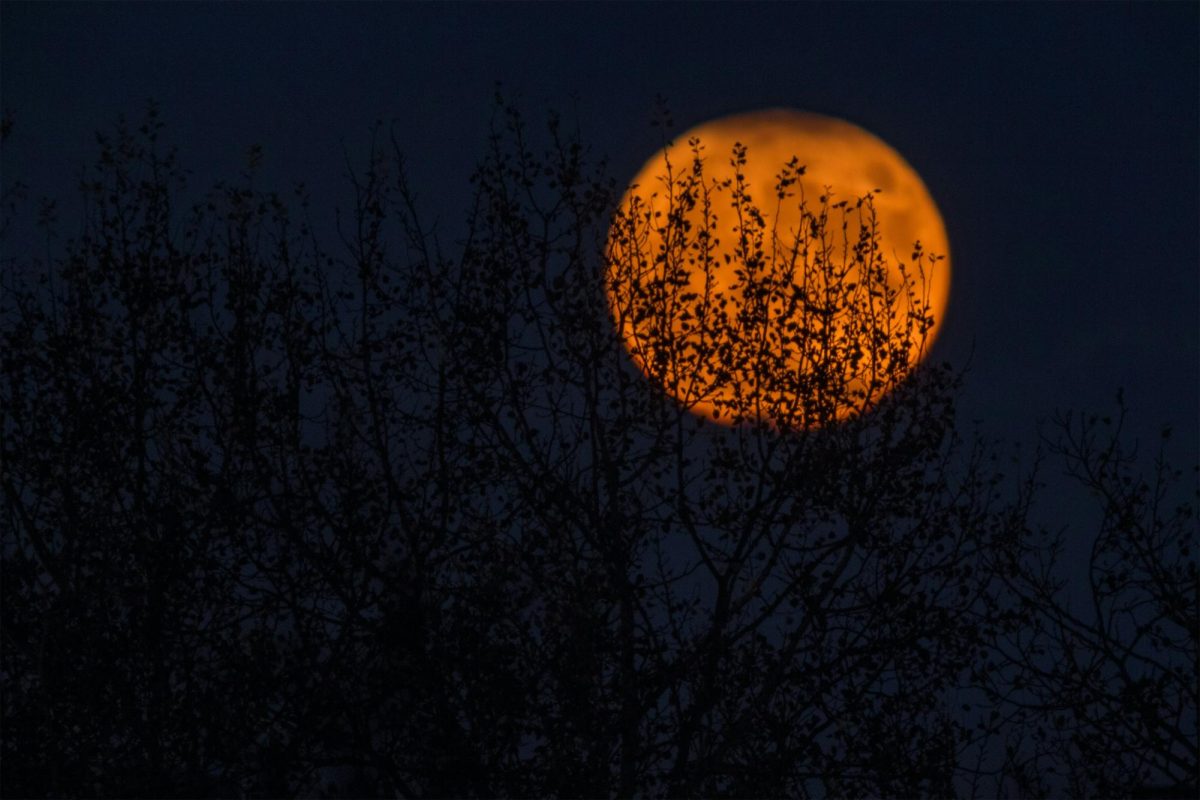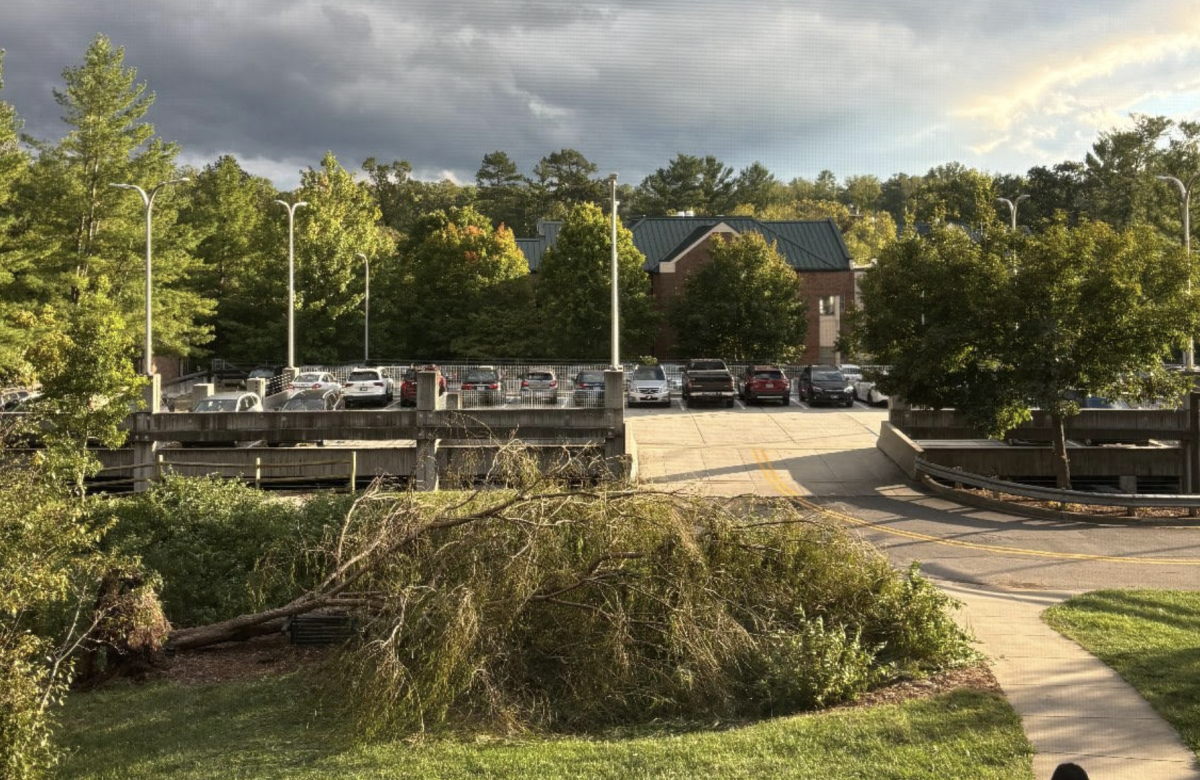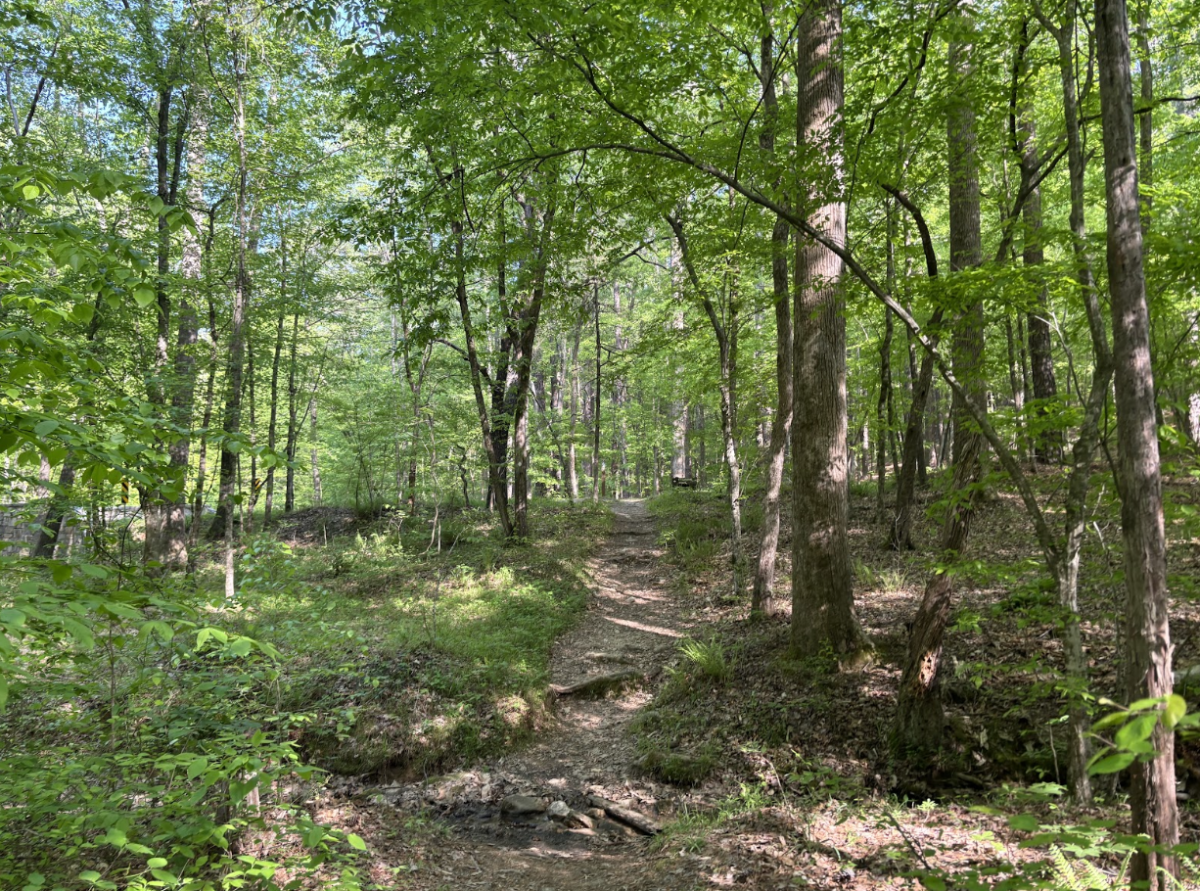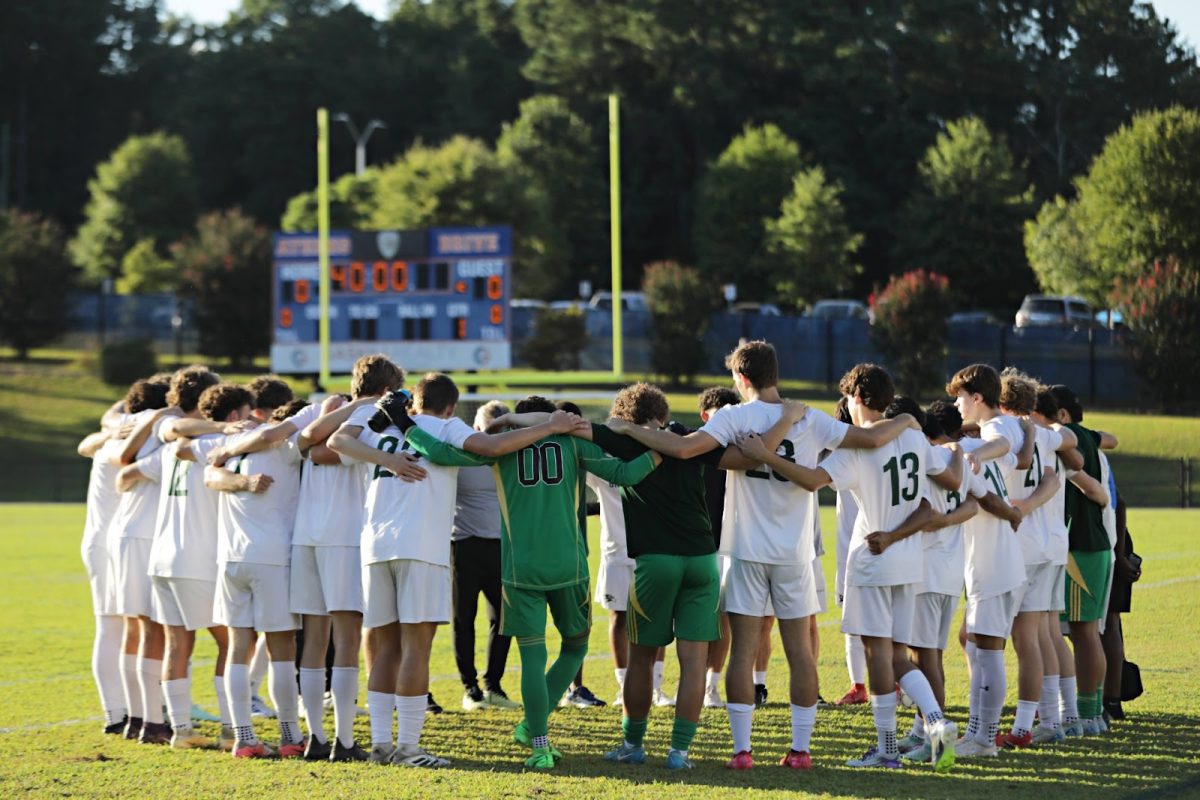A great way to exercise and spend time outside is hiking. Connecting with nature through hiking can be an exhilarating experience. It can also be challenging as trails differ within parks and some are more challenging than others.
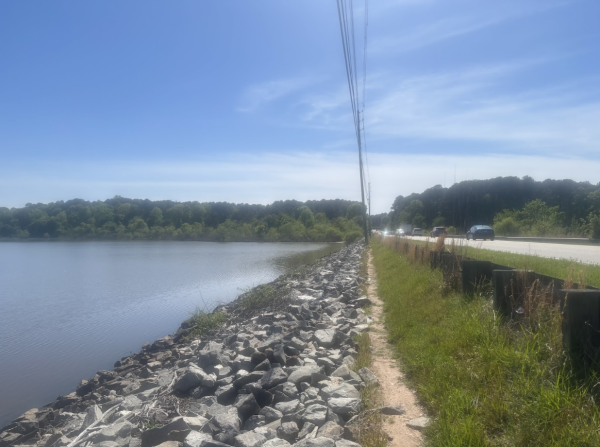
(Leo McDunn)
Lake Crabtree County Park: The groundwork that led to the creation of Lake Crabtree County Park first started in the 1950s but wasn’t constructed until 40 years. During the 1950s, the Crabtree Creek Watershed Project was built as a way to mitigate flooding under the authority of the Watershed Protection and Flood Prevention Act of 1954. A rainstorm that brought immense rainfall and caused flooding in Raleigh led to the decision to dam the lake.
The county park features multi-use trails for biking and hiking, and all combine to be about 9.6 miles long. The Lake Trail is a six-mile path that makes a loop along the 520-acre lake. At Lake Crabtree, there is the Old Beech Nature Trail, a 0.6 mile loop that serves as a self-guided environmental education experience. This trail has 24 stations that explain different features of the forest, the trail and the park. One such feature is a Tree Identification Wheel. This wheel is positioned on a table with an arrow pointing to native trees, identifying them and teaching the visitor a little bit about the trees around them.
Eno River State Park: The Eno River State Park was originally home to the Eno, Shakori and Occoneechee tribes. These tribes lived along the river, and during the 1600s, merged to form a village. In 1965, efforts to protect the river started after the Durham city council proposed creating a reservoir in the river valley. Margaret Nygard, an environmental activist, founded the Eno River Association and became the organization’s first president. The association advocated for the creation of the Eno River State Park, frequently arguing with developers and planners, until the State of North Carolina approved the idea in 1973. In 1975, the state acquired more than 1,000 acres of land for the park. Nygard was posthumously awarded one of North Carolina’s highest civilian honors, the Order of the Long Leaf Pine.
The Eno River State Park consists of approximately 21 different hiking trails, all spanning 30 miles long combined. The longest trail, the Mountains-to-Sea State Trail, is a 7.5-mile one-way trail and is listed as an easy difficulty. The shortest trail, the Piedmont Trail, is a 0.18-mile one-way trail and is also of easy difficulty.

(Leo McDunn)
Jordan Lake State Recreation Area: Jordan Lake State Recreation Area is a prominent site of many cultures. Archaeologists have explored the remains of 450 historic sites, uncovering many Native American artifacts. After a hurricane struck the area, Congress directed the U.S Army Corp of Engineers to undertake a comprehensive study of water resources needed in the area. The project was authorized in 1963 and construction started in 1967. In 1973, the project was named after former United States Senator B. Everett Jordan. The project eventually finished in 1983. The lake is over 46,000 acres and used for both recreation purposes as well as a water source for surrounding cities.
This state park consists of nearly 30 miles of hiking trails. The park has eight hiking trails. The longest trail, the New Hope Trail, is a 5.4-mile loop and is listed as of moderate difficulty. The shortest trail, the Children’s Nature Trail, is a 0.5-mile one-way trail and is of easy difficulty.
William B. Umstead State Park: The William B. Umstead State Park was established in 1937 through President Franklin Roosevelt’s new deal programs, the Civilian Conservation Corps (CCC) and the Work Progress Administration (WPA). It was first named the Crabtree Creek Recreational Demonstration Area. In 1955, this park was named after former United States Senator and North Carolina Governor William Bradley Umstead in recognition of his work in conservation.
The state park is now made up of nearly 35 miles of hiking trails. It features 15 different hiking trails; nine are dedicated to hiking and six are for hiking, biking and horseback riding. These nine dedicated hiking trails have a range of difficulty and mileage. The longest trail, the Sycamore Trail, is a 7.2-mile loop and has moderate difficulty. The shortest trail, the Company Mill Spur Trail, is a 0.2-mile one-way trail and is listed as an easy difficulty for hikers.
This just scratches the surface of hiking spots in the triangle. From different mileages to different terrain, these spots are geared to all kinds of hikers.




